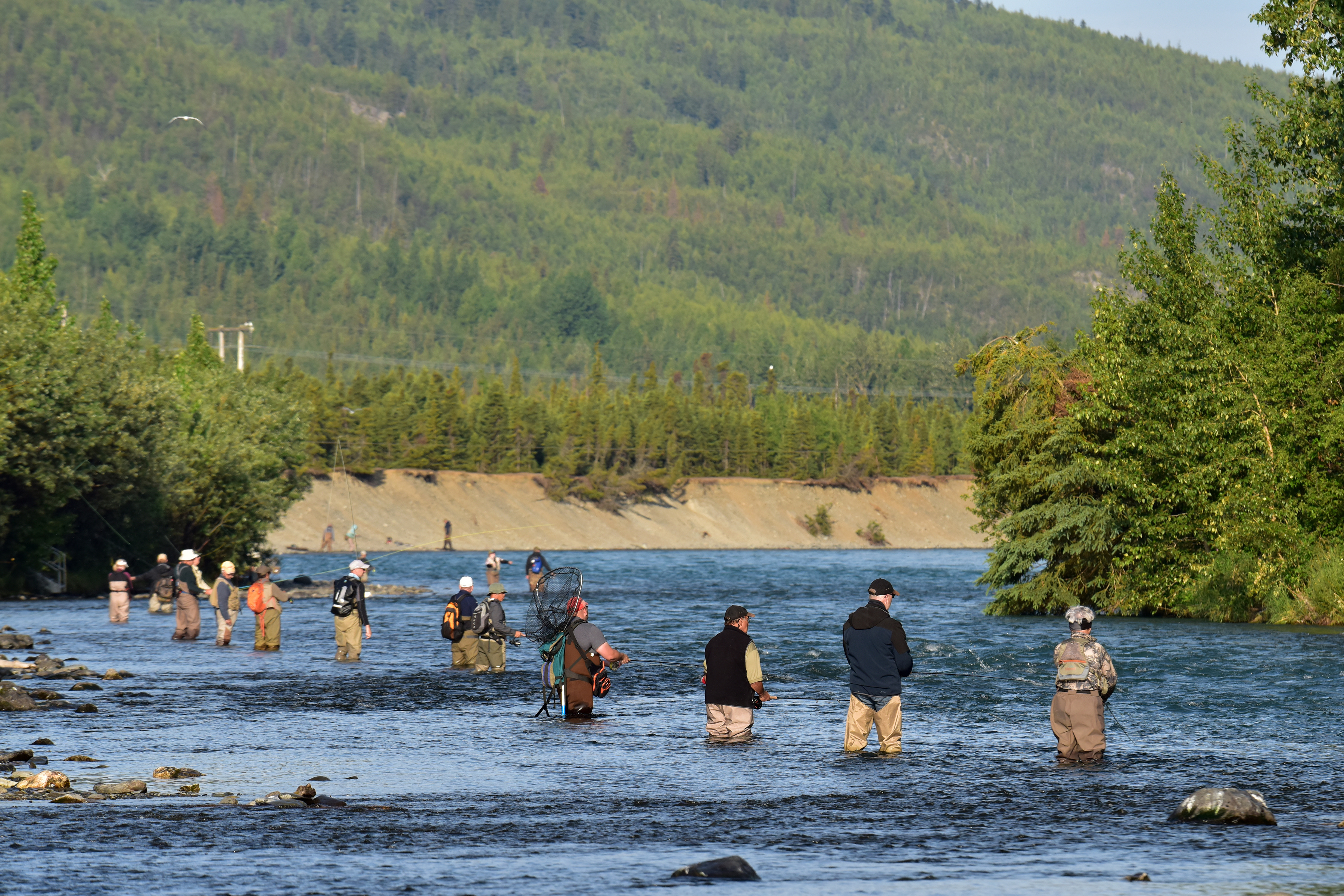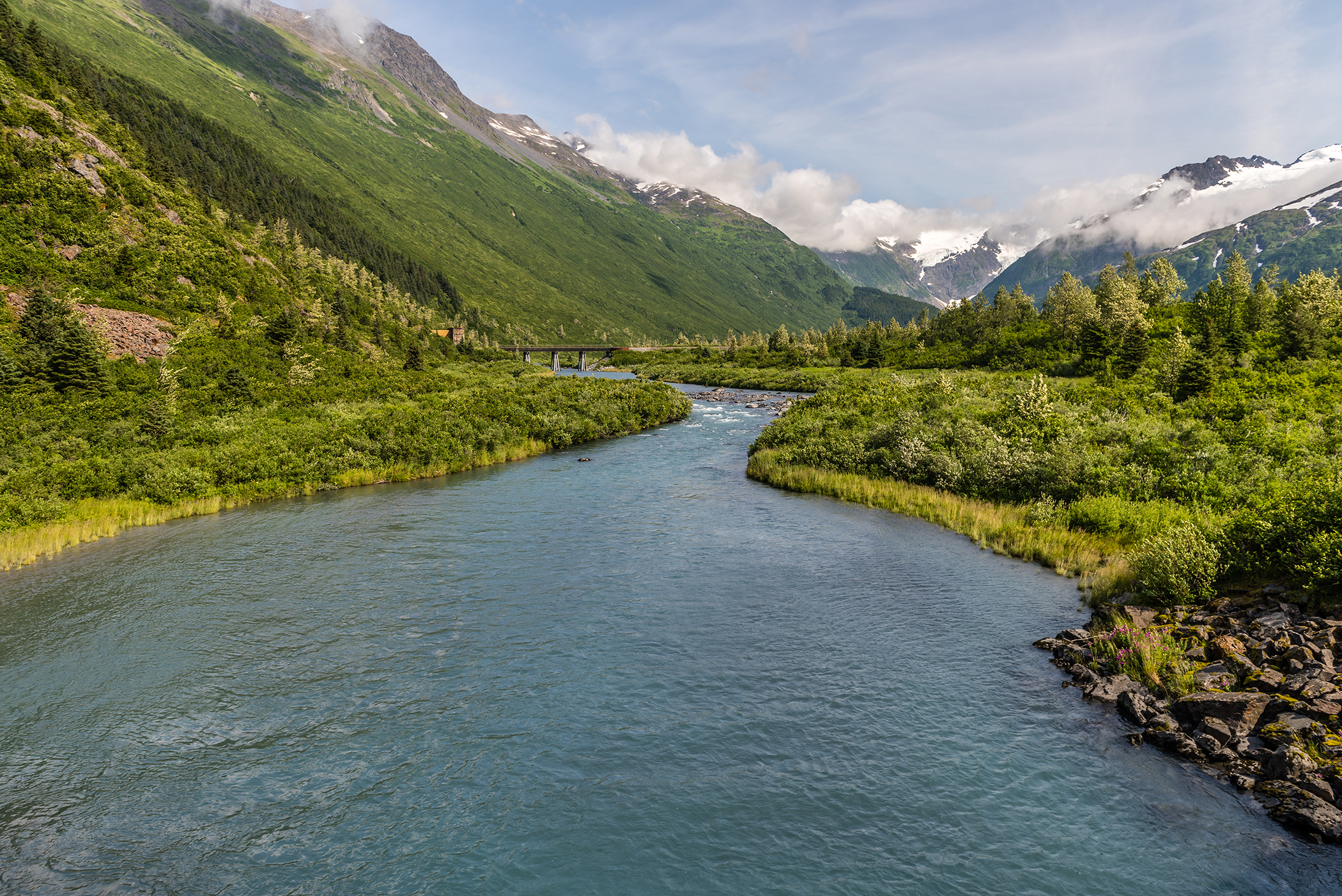Mapping out the complexity of the Kenai River Fishery
Logan, Utah – Fisheries are complex in many ways: many fish species migrate over vast areas through diverse habitats, individual fish species compete with one another for resources, habitat conditions are constantly in flux, and regulatory agencies implement a variety of policies and regulations to ensure the fishery is sustainable over time. Many scientists and resource managers spend decades dedicated to understanding just one small piece of a fishery, whether it be migration behaviors or optimal habitat conditions. It’s only rarely that researchers can step-back and truly understand all the pieces within a complex social-ecological system and see how they are related. New research, published in the Journal of Environmental Management, provided just that opportunity for the many scientists, managers, and stakeholders involved in Alaska’s Kenai River Fishery.
Located just south of Anchorage on the Kenai Peninsula, the Kenai River Fishery is the most popular sportfishing destination in Alaska. It extends from the glacier-dotted Kenai Mountains in the east to the Pacific Ocean’s Cook Inlet to the west. It also spans the Chugach National Forest and the Kenai National Wildlife Refuge. The Fishery provides opportunities to catch all five species of salmon as well as other species. It also supports a robust commercial fishery as well as a personal use fishery for Alaska residents. Many of the species in the Kenai are anadromous, meaning they spend most of their lives in the ocean but return to the Kenai River to spawn. Nearly all commercial fishing occurs in the ocean, while nearly all sportfishing and personal use fishing happens in-land. Put all this together and you get a very complicated and dynamic system.
Chase Lamborn, Assistant Director of Visitor Use Monitoring and Management with the Institute of Outdoor Recreation and Tourism, set out to untangle the complexities of the system. Over the course of two summers, Lamborn conducted interviews with stakeholders across the Kenai Peninsula. He had stakeholders create “mental models” of the fishery. These models detail each piece of the fishery’s social-ecological system, as well as how the pieces are related. For example, they detail how changes in habitat—e.g., ocean variability or streambank degradation—can affect salmon returns in the Kenai River, which then affect the sport, personal use, and commercial fishers, which then results in the management agencies changing regulations to alter harvest rates and/or protect/restore habitat. Each interview provided a little bit more detail about the system. Ultimately, Lamborn was able to piece together all the information from his discussions with extensive literature reviews to create a complete model of the entire social-ecological system.
 Anglers fish for sockeye salmon (Oncorhynchus nerka) at
Anglers fish for sockeye salmon (Oncorhynchus nerka) atthe confluence of Alaska's Kenai and Russian rivers
“While it took us two years to create the model, it really is just a starting point,” said Lamborn. “The intent is for the model to be used as a guide by scientists and resource managers, so they can organize information and see how a change in one part of the system can affect everything else.” In the next phase of this work, the research team will be looking into how large-scale disturbance events, like fire, can affect the stability of the system. Lamborn, who’s leading the ongoing work, noted “We have a great starting point with this model. It will be a foundational piece for not only our future work in the Kenai, but also for the other social and ecological science occurring there.”
Chase Lamborn, PhD
Assistant Director of Visitor Use Monitoring and Management
chase.lamborn@usu.edu




